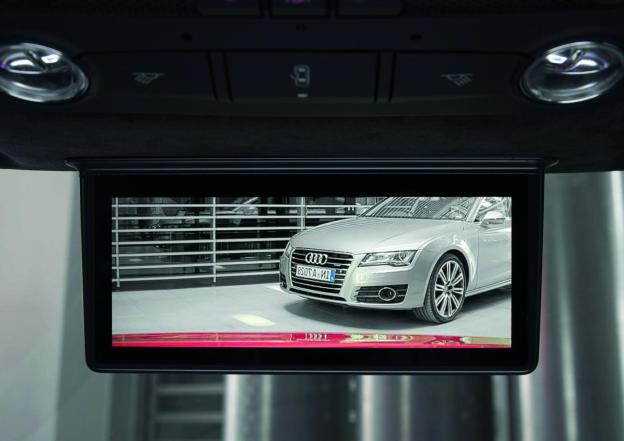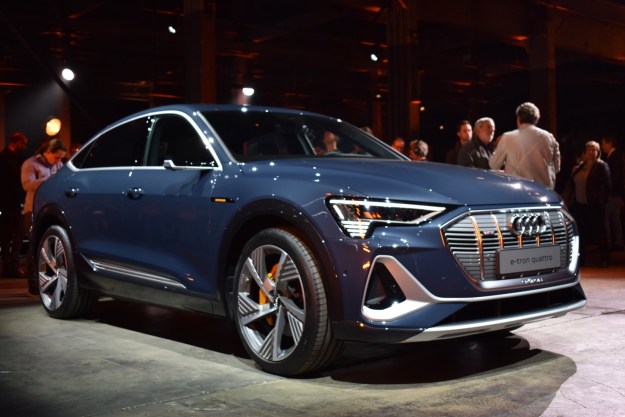
As if we needed even more reason to want this car, Audi has announced it will implement a digital rear-view mirror — currently featured in its Le Mans-winning Audi R18 — to the upcoming all-electric Audi R8 e-tron scheduled to hit the road later this year. Unlike conventional cars, the R8 e-tron does not contain a rear window. That being the case, Audi has decided to transplant some of its race-inspired technology into the dazzling new sporty EV.
Replacing a conventional glass mirror is a 7.7-inch AMOLED (Active Matrix Organic Light Emitting Diode) display. Similar to what is seen in new smartphones. It will be fed by a small, ultra-lightweight camera located in an aerodynamically optimized housing bay, and is designed to provide a vivid and clear image during all hours of driving. According to Audi, the display will even be able to auto adjust glare from other vehicles directly behind you. Drivers can manually dim or switch off the display entirely.
Audi is touting its new digital display as a “high tech successor” to the conventional rear-view mirror and that statement looks to be dead on. On top of sporting a lens that measures just a few millimeters in diameter, the new display would allow for greater field of vision and be more energy-efficient, thinner, and lighter than conventional LCD displays currently on the market. And aside from relaying images from the camera feed, Audi is working on implementing even more information to the display in the future.
While the modern automobile is constantly evolving, there has been very little innovation when it comes to features of car that are much more ordinary– the rear-view mirror being one of them. With the introduction of Audi’s new display we’re genuinely intrigued by the possibilities. Audi has yet to confirm if, or when, this feature would make its way to other vehicle models, but we’re hoping the technology makes its way into something we can actually afford.
[Update]
We reached out for clarification as to whether or not we could expect to see Audi implementing the digital rear-view mirror in other vehicle lineups and according to Mark Dahncke, Product and Motorsports Communications Manager for Audi of America, the German automaker has yet to approve of any such plan. Furthermore, Audi is currently awaiting IHS approval for its new technology in the United States.
Editors' Recommendations
- Audi Q6 e-tron ushers in the automaker’s next EV phase
- 2023 Audi Q4 E-Tron first drive: the predictable and traditional EV SUV we need
- Audi’s electric 2022 Q4 E-Tron packs big tech, lots of space in compact package
- Audi E-Tron vs. Jaguar I-Pace
- Audi’s Q4 Sportback E-Tron will have customizable LED headlamps, 279-mile range


